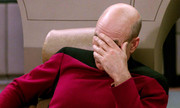- Joined
- Feb 24, 2014
- Messages
- 240
Vadim,
Another counter-intuitive question: after that outstanding report on angles/performance why don't meat plants sharpen at 12 DPS?
...
They do, but it is not all that straightforward.
At meat plants optimized for best performance, they sharpen knives to a lower edge angle.
As knife brands are not equal, not all hold the low angle edge well, so it is not necessarily the 12 dps.
Boning butchers commonly use knives of 11-12 dps.
Look, at the plant there are 100 boners that have been cutting with 15-18 dps knives since their apprenticeship, for many years.
Give them the best performing knife sharpened at 12 dps, and you will disrupt the process. They will tell you that the knife "clings to the bone" and refuse it, and even if all your indicators show good, this cannot change years of habits... And if we disrupt the process and cause losses, our consulting business is doomed.
The management' willingness to optimize, habits and legacy of the past, concepts in the head of the plant trainer, the way they steel, grinding and honing equipment they already have and whether they are willing to upgrade, staff re-training - all that matters.
In commercial kitchens it is chiefly portioning cuts, they load knives differently than boning. In kitchens the middle and heel sections of the blade carry the main load. While in boning where many cuts are done with reverse grip, the tip half of the blade carries the main load. Meat plants and butcheries require very sharp knives that dull mainly from rolling; though knives are sharpened daily, they are relatively easy and quick to resharpen. Commercial kitchens are happy with "working sharp" knives, and the edge that we get from them is abraded off by the hand-held pull-through "sharpeners" they use to "maintain" the edge; sharpened once in 3-4 weeks and require full regrind.
In my Knife Deburring book you can read about all common knife steels, and see our sharpening protocols for them, including the VG10. Sharpness in BESS, sampled in the sharpening protocols is from real sharpening sessions. If you cannot see your knife steel in my book, email me and I will be more than happy to give you our protocol for that steel - you can adapt it to the sharpening equipment you have.
Testimonials: http://knifegrinders.com.au/Book_Testimonials.htm
Last edited:



